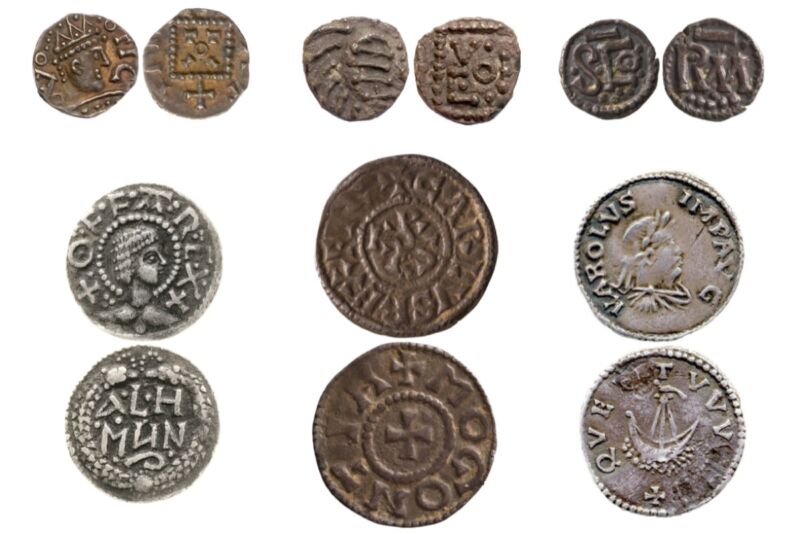Study: Silver from early medieval coins came from Byzantine, Francia sources

Enlarge / A selection of the Fitzwilliam Museum coins that were studied, including coins of Charlemagne and Offa. (credit: The Fitzwilliam Museum, University of Cambridge)
Sometime around 660 CE, silver coinage replaced gold as the dominant form of currency in northwest Europe. But what was the source of all that silver? According to a recent paper published in the journal Antiquity, silver for the earlier post-Roman coins during this period came from Byzantine silver plate, while silver for the later coins most likely came from mines located in Melle, Aquitaine.
“This was such an exciting discovery,” said co-author Rory Naismith, a medieval historian at the University of Cambridge. “I proposed Byzantine origins a decade ago but couldn’t prove it. Now we have the first archaeometric confirmation that Byzantine silver was the dominant source behind the great seventh-century surge in minting and trade around the North Sea.”
There are a number of high-tech tools that can be used to learn more about historic currencies. For instance, Michael Wiescher, a nuclear physicist at the University of Notre Dame, has combined XRF scaling with PIXE mapping of Roman denarii to test the currency’s quality and learn more about the production techniques. Working with his undergraduate students, he has also used electron spectroscopy to measure the silver content of each coin and learn about how the impurities were distributed.


